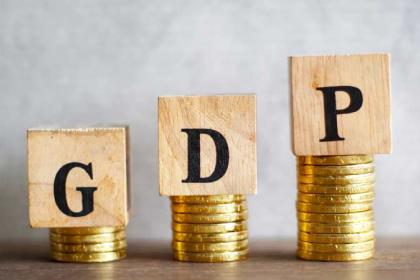
The report forecasts global economic growth to 2.6% in 2024, barely above the 2.5% threshold commonly associated with a recessionary phase.
This rate also signifies the third consecutive year of growth below the pre-pandemic average of 3.2% from 2015 to 2019.
The report says the prevailing focus on inflation overshadows urgent issues like trade disruptions, climate change and rising inequalities.
It advocates for structural reforms and coordinated global efforts, proposing a comprehensive strategy that includes both supply-side policies to boost investment and demand-side measures to improve employment and income.
Shifts in international trade
In 2023, global merchandise trade fell by about 1% in real terms, marking a significant divergence from overall economic growth.
The contraction was partly due to trade tensions among some large economies and subdued global demand.
Such headwinds were compounded by a “high base” effect due to the unprecedented temporary shift in consumption patterns – from services to trade-intensive durable goods – during the COVID-19 pandemic. As buying habits normalized – and even fell short in some sectors – global merchandise trade declined.
Over the last six months, disruptions in key shipping routes, such as the severe drought affecting the Panama Canal and attacks on vessels in the Red Sea, have strained merchandise trade further and significantly increased shipping costs.
Debt dynamics in developing countries
Developing countries’ governments are struggling under increasing debt payment obligations. In 2022, they paid $50 billion more to external creditors than they received in new loans.
High global interest rates have worsened these challenges, with currency depreciation making foreign-denominated debt more costly.
By 2023, nine low-income countries had fallen into debt distress, with an additional 25 on the brink, underscoring a worsening global debt crisis.
Commodity markets remain volatile
Despite falling by 6.8% in 2023, commodity prices remain significantly higher than pre-pandemic levels.
The energy sector saw the largest price drop at 16.1%, yet prices are still about 40% higher than the averages between 2015 and 2019.
These elevated prices benefit exporters but heavily burden net commodity-importing developing countries.
Regional economic outlooks
Africa: Projected to grow at 3.0% in 2024, up slightly from 2.9% in 2023. Armed conflicts and climate impacts pose significant challenges in several countries. Meanwhile, the continent’s largest economies – Nigeria, Egypt and South Africa – are underperforming, affecting overall prospects.
Americas: Growth is expected to slow, with Argentina facing severe inflation, and Brazil's economic momentum dampened by external pressures and reliance on commodities. North America remains relatively resilient, though challenges continue.
Asia: China targets around 5% growth in 2024, capitalizing on robust manufacturing and trade. India's economy is buoyed by strong public investment and service sector growth, with a forecasted expansion of 6.5% in 2024.
Europe: Struggling with weak economic activity, countries like Germany and Italy are facing industrial slowdowns and fiscal constraints, impacting their growth projections.
Oceania: Economic growth in the region, particularly in Australia, is expected to remain subdued, with the low-growth period extending into 2024.






